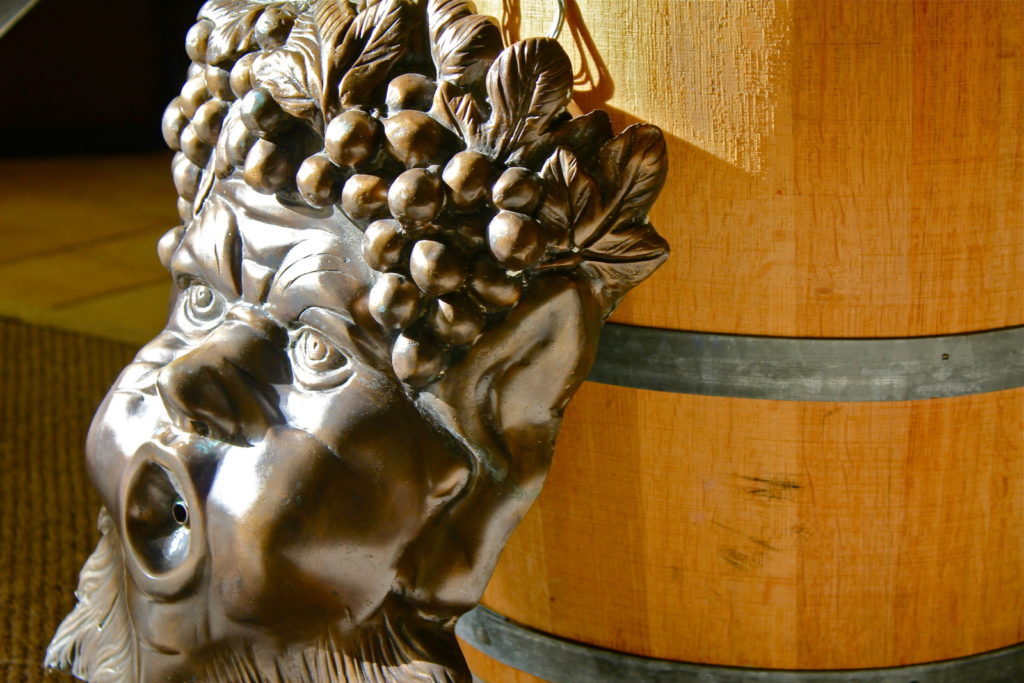I’m about to tell you a perspective based on my personal and professional expérience : I traveled a lot, stayed in very nice hotels, ate in fine restaurants… I saw many landscapes from Auckland to Sydney, from Honolulu to Rome, from London to Biarritz… So I could form an opinion of what luxury is, what is the concept of receiving, the expectation that customers are waiting for depending on the location in which they are, the Service they want… and I have to say that in France, we know how to receive… At least in general… We have a classic relatively strict conception of what is the réception concept. In the US, no matter how you are dressed as soon you pay, you are the ‘customer king’. It’s normal to see Americans going to Vuitton stores with flip flops and coming out armful with branded bags…
In France, we have to be dressed, make up, fragranced for the occasion… As conspicuous consumption, to be melted in the place ! Which is nice, I must admit. Yet, I am often disappointed, not by the places but by the behavior of those who receive. It’s not enough to have a nice hôtel or a nice restaurant in order that the customer will be happy ! And this also applies to the Bordeaux Châteaux !

I had American customers recently : they wanted to visit Saint-Emilion, Medoc and Pessac Leognan. In short, they were here to discover the wines of Bordeaux ! They had no visible problem of money because they came to France just one week and only to satisfy their wine curiosity. It was after this little trip through the vineyards that I decided to write… This is not the first time that this desire tickles me, but after all we must remain objective. Sometimes you apologize because you can be on a ‘without’ day… It happens. But I convinced myself .. This is not a negative review… This is an article guide, an article for the guide or a guide for anyone who wants !!
“Hello, Welcome to the Château… The visit is about to start…”. We will not complain, at least we get a “Hello” ! Because my dear friends, there is a rule of thumb, one and it’s so simple to apply : politeness. It always begins with a smile… I remember an advertisement in Tahiti just to highlight the importance of the smile in tourism : ‘Hang a smile to your home’. This quote is inspired by Roland Delisle : ‘Hang a smile to your face, it makes it charming’ and it’s also free ! Not a trade exchange ! So ladies and gentlemen, please, start with a smile. The prison doors have no reason to be in the field of tourism and luxury. Otherwise, change job !! This is the BA-BA ! When you’re doing a job contact, regardless of the context if you must communicate, convey information, represent a company – a Château – a wine, you must have an impeccable image and a bright smile ! Next step is how to communicate : Hi, Hello, Dear, Madam, Sir, Thank you, Goodbye… Courtesy watchword. But there are still gaps…
Here is a little story just for your… You know me, I write about what I love. I do not express myself if I didn’t like the wine or if I wasn’t enchanted by the Château. Why ? Just because that day, maybe I was not prepared to enjoy this wine. Maybe that day, the wine was not great but in a year or two it will be. Maybe that day, the guide was not in a happy mood. Maybe… So when I have a doubt, I prefer not to write about it.
But this time, even though I will not mention any names, I’ll tell you what I don’t like to live… So I went with my American customers in Saint-Emilion and I had heard about a restaurant is a Château belonging to a personality of Bordeaux. So I booked by phone and warned that I would arrive between 12:30 and 13h. So I know that purists will say that a range of 30 min is huge… Anyway, I could not set a specific time because I had a visit before… I arrived at 12:45 with my clients. The server who received us did not say hello or anything. He just asked me the name for the booking and said “You’re late, there scored 12.30… It’s too late, I don’t have your table anymore because I gave it. You should have been on time…”. Uhhhh… Excuse me sir, but 1) Saying Hello is not going to kill you, 2) You might speak otherwise, 3) When I booked, I hypothesized that I could not get it to half past twelve, 4) 15 minutes ‘delay’ is not sufficient to give a table to other customers. In other words, it was just unimaginable that a server dared to talk like that like reproaching. I accept the comment of delay, I apologized but I found that his attitude was inappropriate and exaggerated. At the end, he found a table but I got bitten… It has been a disaster and I was ashamed to book in this restaurant. I wondered what my clients would think : they thought like me ! Fortunately, the view was nice… We get still no smile during the service, even from the waitress. Nice atmosphère ! We were a little bit in the sun so the waitress took an umbrella to the table next to us to put us out of it (thank you), she said to the poor clients of this table that it would not change anything for them and that she was the one who decided… Okay !! It means everything… But the food there ? Not exceptional, rather oily and untasty… The wine ? Cold, too cold. For a Château, it’s not a panacea to serve correctly wine usually. But hey, we can’t be good everywhere right (private joke) ? Question budget, it was pretty decent so at least I didn’t hurt my wallet ! But here’s the typical case of a missed lunch !
Talking to chefs is interesting : I realized that France is rather the black cat… We are well-known to be unfriendly, proud and not smiling… High five to us ! There is what Americans think and there what the Frenchies think. For French people, clients must respect the work of the hosts. This is normal : a rude customer is not very cool, I admit. The French people stuck about it… In the US, customer is king. Why ? Because who pays, decides. I am rather of this opinion even if I will do a mix of both : to respect the work while waiting for something to meet the demands. If I’m going to a nice restaurant and if I pay 90 dollars, so I expect that the food will match this bill. Well ladies and gentlemen, this is the same in the Château and œnotourism !!!
I’m working in the wine world. I’m lucky because often, the Châteaux are offering me the visit. I thank them for this goodwill gesture. I am generally very well welcomed. In the contrary with the ‘lambdas’ tourists, visits have to be paid between 8 and 15 euros in general and it’s a wine tourism globalization : there is no more customization. I must admit that all visits are usually very well done though as a pro I sometimes detect small inconsistencies in the explanation of the winemaking, the history of Bordeaux vineyards, type of vines… But it’s not the end of the world… For example the last laugh I had is recent. I went to a beautiful estate in Saint Emilion (decidedly)… Just renovated, it was very beautiful architecturally. The guide told us that this property was on the same market as the neighboring property. Tourists have swallowed this : it’s normal, they don’t know the prices of all the wines. Except that the neighbor bottle reaches 800 euros and on the Château the wine is around 60 euros… I giggled internally… It was a commercial note from the guide, you understand !
Finally, to return to our subject when you made a visit for 15 euros, you expect to taste more than one wine ! Okay, if the bottle is 800 euros, I agree with the tasting of only one wine. But we are doing wine tourism, it’s not only business though? It’s all about to share ? To discover ? When customers buy bottles, maybe you could offer them the visit ? If they are in a tour, I understand and I find it normal that the visit is paid (by the guide usually). But when you buy wine for 200 euros, why not to give away the 15 euros visit ? Are you rats at this point ?? Oops, I may be offended more than one here ! Well I take back what I said. It’s true that all work deserves to be paid…
I’m part of a global organization that showcases gastronomy, wines and spirits but also conviviality around a table. The Chaîne des Rôtisseurs is a nice opportunity to meet chefs and gourmets in order to discuss the field. And precisely their point of view is very interesting. The conclusion is simple : a few years ago, the restoration has introduced the service rather cold, centered on the plate already established and conceptual. Customers were coming for the place, for the minimalist service for sure but primarily they were coming for the chef. Today we should, we have to put the server back in the center of the experience. The art of cutting has been abandoned for exemple : it must being reinitiated. Customers no longer want this impersonal service where only the sommelier could be the human link between the table and the kitchen. The servers have a job, they studied, they must take care of customers and now it’s what are asking for the gourmets. 50% of food, 50% of service = 100% satisfaction.
It’s the same thing in the Châteaux : people want to be pampered. Lets give away the ultra technical visits to explain what is the AF and the MF (besides that who knows what those initials mean ?). No more details like 46.5% Merlot, 2.3% Petit Verdot and the rest of Cabernet… Who can really tell, apart a pro, the characteristics of the varieties and that if this assembly is accurate ? As tourists, we want the people (the tourism pros) to take care of us !! We want to learn, we want to share, to be the witness of a transmission. We want to smile, to be in a good mood… Because even if to be in contact with customers is not easy, even if sometimes it’s harsh to work with other people, we (the tourism pros) must be polite and efficient ! Who pays, decides… I say it before and I repeat it… This must fit into your heads ! And today the fashion of pampering and sensory marketing is all about dreaming… It’s what the tourists are waiting for and we are the guardians of this will.
Wine tourism is the future, it’s undeniable… It’s even our present. We are behind in France compared to the Napa Valley for example… I have to fight with US clients to book 15 days in advance minimum their visit because they can not arrive like this in Bordeaux Châteaux ! In the Napa Valley, they don’t care ! You come as you are (like in McDonalds) and you will be served like royalty. This is not the same in France… Here you have to book, plan and above all you must come dressed properly (I go back to what I said in the introduction… appearance is important). So American tourists, you have to know that if you want to visit Châteaux in France, it’s pretty rare to come without appointment and to get a tour… It’s like that !
How to receive in a french way, is an art… There are the smile, the politeness and the neat appearance… When all these elements are all together, we reached the pinnacle of this know-how. It’s why tourists come in France : there is a vagueness, like the French way of living. A powdery style made in France, the French touch that can not be defined but really is because it’s our hallmark that I have found nowhere else. It’s this class that is in us… So we don’t need to try to develop it but we have to preserve and promote it. It’s a bit like the frenchie classy fashion ! Everyone talks about it, everyone finds it great but French people do not pay attention to what they wear… They do it naturally ! It’s the same for our expertise about reception and hospitality. It’s quite difficult to define something intangible but perceptible. It’s like the concept of terroir… We know that it exists but to really define it, it’s complicated…
To summarize, if you follow the points below, you are made to work in wine tourism ! Easy !
1) You must love people
Wine tourism is all about to receive people for sightseeing but also for events like weddings and dinners. You must love people because reception is not something that we really learned. There are some that knows and others that doesn’t and will not do effort ! We must therefore learn to love the people in order to receive them correctly. In addition, wine tourism is all about sharing and transmission.
2) You must love wine
Wine is not a product like any other. It’s a living thing. The wine is almost like an endless story… This is the story of an ancient land, the weather and the Gods which are keeping the secret of a baby seed that will become an adult vine… This is the story of the combination of these three elements coupled to the expertise of a loving man and technician. This is the story of a garden that will make fruit until the harvest… Usually quiet between the wind and the rain, even if the machines are working sporadically in the vineyard, for a short time men will lighten the vines… This is the story of a man who is going to take a grape and turn it into wine… This is the story of a passage from the solid to the liquid between the alcohol vapors. This is the story of molecules that combine, activate and provide a thrill. Then there is also the story of a wine that will go from the bottle to the glass and from the glass to the throat. This is the story of an encounter between a taster and a tasted. Finally, it’s the story of a timeless memory, a taste, a moment, an agreement… An almost endless story that is renewed each vintage. You have to love people to be a storyteller and you must love wine in order to make people dream.
3) You must love inheritage
In wine tourism, you work in an agency or in property. In both cases, the Château becomes the place of rendez-vous. Of course the wine is a story in itself, but it’s also a part of the place’s history. Built in such a year, at such time, by such person… The place has lived and continues to live. You as guide have to love History, you must know your classics and above all you must be an ambassador of the culture you represent. Not by chauvinism, but because it’s your identity. Guests must dream… Find out the little boy or little girl who sleeps in them and tell them a story, a legend with anecdotes. A Château – castle in English – after all, it’s part of fairy tale!
4) You must have a minimum of technical knowledges
Clients of wine tourism are men and women who are curious and love wine in general. So they will ask questions and even if it’s not necessarily required to enter in the meandering maze of vinification to get them lost, you should know a minimum of things on the wine production. Why ? Because it’s better to say I don’t know, rather than talking nonsense. The difficulty of wine tourism is the reputation, based on the fact that each property have the same speech. The form can be serious, crazy, shiny, bling bling… Whatever but it should be similar to the neighbors. The background is the outline of viniculture and viticulture. This is the story of classifications, geography, geology, varieties, harvest time, the alcoholic fermentation and the malolactic, bottling, the role of the barrel, the hygiene, the tasting and pairing… Lots of informations, not a lot of time to share them but it’s the ABC which is expected during a visit. A blend of history, geography, pedagogy, winemaking, perfumery and cooking…
5) You must have a good ability to adapt
But why ? Simply because in wine tourism no ostracismis allowed : everyone comes as they are. But it’s true that sometimes it’s complicated. You must be able to adapt your speech to the person you received, based on its knowledges but also and especially its humor ! This adaptability must resist to funny little guys putting their fingers in the barrels, to dredgers men who feel verve and to the impatience of some people who believe in an open bar ! It’s hard to take on yourself, but it’s necessary. Some clients like professional journalists or winemakers are specific, so we must satisfy them by adapting the speech. In the contrary, clients may be pure amateurs who think they know everything but in fact they poorly assimilated what they have read or heard. Then you should have the tact of teaching without creasing : difficult but possible exercise.
6) Be aware of the different cultures
Somewhat parallel to the previous point, you actuallly have to adapt to different cultures. If I make a specific point it’s because every nationality has its throughs and expectations. I took a very interesting course when I was in college in the USA. It was a course on business with different cultures. Basically, you have to adapt, to be careful about what you say, what you do, even the colors you wear. For example, we know that the Chinese people like red color because it’s synonymous of luck. In the contrary, white is the color of mourning while in Western societies it’s the color of marriage and therefore festive ceremony. Another example : the Japanese people, when they give you their business card, give it with both hands. So you must take it with both hands too and also never put it in a pocket before your Japanese host leaves the room… Well that’s full of details you need to know. Chinese people mock tours and tasting because they know nothing about it (wine is not cultural), they want to take pictures and pose in front of large famous Châteaux. US clients are very attentive to the schedule, as the English and Australian people : before it’s not the time and after it’s too late. They are pretty strict and they want the service to be in line with the price they pay. The Japanese are far behind, especting and never say they did not understand something in order not to lose face. Emirates customers want the spectacular, gold, bling and to spend their money !
7) You must have a perfect presentation
Finally, the presentation. I spoke at length of this article. Smiling, cleanliness, respect, courtesy, politeness. In short, the base, the base, the base. The guides represent a property, a name, a brand sometimes. They are ambassadors on site of the wine and all it represents. But I’ve said enough, so I’ll stop there …
Finally, two words : Skill and Stooge !



